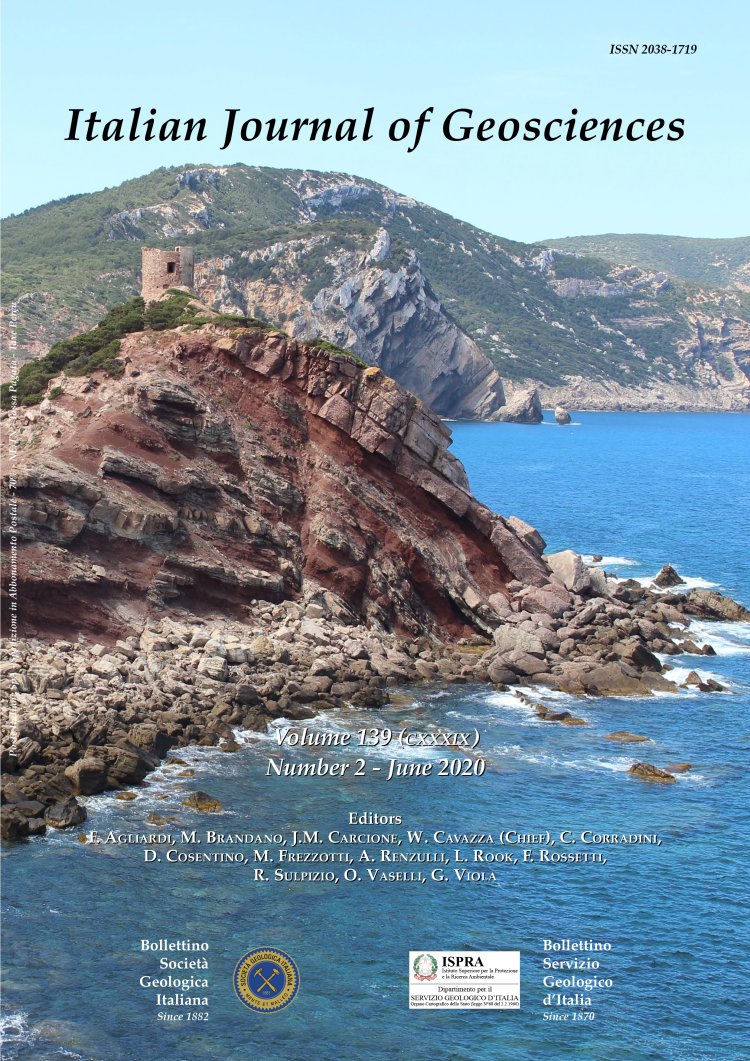
The Carboniferous-mid Permian successions of the Northern Apennines: new data from the Pisani Mts. inlier (Tuscany, Italy)
Federico Marini (1), Enrico Pandeli (1,2), Marco Tongiorgi (3), Elena Pecchioni (1) & Letizia Orti (1)
(1) Department of Earth Sciences, University of Firenze - Via G. La Pira, 4 - 50121 Florence.
(2) Florence section of Geosciences and Earth Resources Institute, IGG - CNR (Pisa) - Via G. La Pira, 4 - 50121 Florence.
(3) Retired Professor of the Department of Earth Sciences, University of Pisa - c/o Museum of Natural History - Via Roma, 79 - 56011 Calci (Pisa).
Corresponding authors e-mail: enrico.pandeli@unifi.it
Volume: 139 (2020) f.2
Pages: 212-232
Abstract
This paper updates and partially modifies the knowledge of the geological-palaeoenvironmental and geodynamic framework of the Tuscan segment of the Variscan Chain during Permian times. Particularly, it adds new data on the contact between the upper Carboniferous-lower Permian San Lorenzo schist (SLs) and the mid-Permian Asciano breccia and conglomerate (Abc) clastic formations in the Pisani Mts. metamorphic inlier which represents one of the key outcrops for the study of the upper Paleozoic sequences in the Northern Apennines. Their sharp unconformable contact is well documented in the literature at map and outcrop scale and was ascribed to the Saalian phase of the Variscan orogeny that would have occurred in correspondence of a climatic change from equatorial to semi-arid tropical conditions. New geological investigations on the SLs and Abc led to the finding of a continuous stratigraphic section in the Pian della Conserva locality (northwestern Pisani Mts.) where the organic matter-rich SLs conformably passes upwards to the reddish immature, mainly coarse-grained deposits of Abc represents a decametric transition zone. The section was studied in detail from a lithological-sedimentological point of view and sampled for petrographic, mineralogic and chemical studies. The data show that the passage from SLs to Abc represents a main change from an equatorial, wet fluvial-lacustrine environment to a well-drained, alluvial fan system in a monsoon-like climate. This event can be related to the reactivation of the previous late Carboniferous-early Permian shear zones during mid-Permian times. Such reactivation produced morpho-tectonic highs subjected to a rapid erosion and the formation of unconformities, whereas the presence of a few residual fluvial plain areas, characterized by dysoxic conditions, is documented by the gradual passage between SLs and Abc in the Pian della Conserva section. In addition, the presence of a metavolcanoclastic or metaepiclastic layer was also recognized in the uppermost part of the SLs and it represents the first evidence of a late Carboniferous-early Permian volcanic event in the Northern Apennines.
Keywords
Get Full Text Supplementary Material